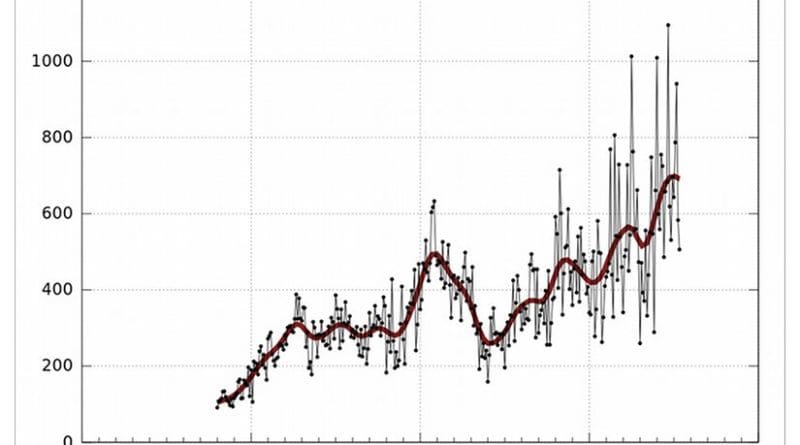Fifty Years Of Singapore-Australian Relations: An Enduring Strategic Partnership – Analysis
By RSIS
Reviewing 50 years of diplomatic relations between Australia and Singapore, Australian diplomats highlight the potential for a strong and enduring partnership.
By Daniel Wei Boon Chua*
During celebrations of 50 years of Australia-Singapore diplomatic relations on August 18, 2015, Australian diplomats past and present recounted the reasons for Canberra’s decision to establish diplomatic relations with Singapore and offered perspectives on how the next 50 years of Singapore-Australian relations would look like.
On August 9, 1965, the day Singapore became independent from the Federation of Malaysia, Singapore Prime Minister Lee Kuan Yew wrote to Australian Prime Minister Robert Menzies, informing him about Singapore’s momentous exit from Malaysia. On August 18, Prime Minister Menzies released a press statement announcing: “The Australian Government has recognised the State of Singapore and I have informed the Singapore Prime Minister that we will be happy to establish full diplomatic relations with Singapore at the level of High Commissioner, and that we wish Singapore well in its new sovereignty and look forward to a continuance of close friendly relations with the new State and with Malaysia.”
Looking back: 1965
The statement marked the start of 50 years of a close and abiding relationship between the two countries that has straddled the physical distance between them and forged bonds of strategic solidarity and partnership that transcend differences of size, population and politics. Australia’s recognition of Singapore’s sovereignty took place against the backdrop of Australia’s defence of Malaysia against Indonesian Confrontation (Konfrontasi).
As former Australian Deputy High Commissioner to Malaysia Richard Woolcott recounted during an event in Singapore, Australia’s decision to recognise Singapore’s independence was made amid President Sukarno’s accusations that Malaysia was a product of British neo-colonialism, as well as the Philippines’ territorial claim over North Borneo (Sabah). Menzies’ decision to recognise Singapore could affect Australia’s diplomatic relations with Jakarta and Manila, the two Southeast Asian states nearest to Australia.
Nevertheless, imperatives to support newly independent Singapore had strong Commonwealth roots. Australian troops had contributed to the defence of Malaya and Singapore during the Second World War and the Malayan Emergency. To give Singapore’s independence unequivocal support transcended geopolitical calculations. In fact, Woolcott opined that it was in Australia’s greater interest to support both Singapore and Malaysia, and establish diplomatic relations with independent Singapore. Since then, Australia has provided multi-form support and cooperation to Singapore including providing training spaces in Australia for Singapore Armed Forces.
Strong relations in 2015
Singapore-Australian relations have grown stronger over the years. When Australian Prime Minister Tony Abbott made his first official visit to Singapore on 28-29 June 2015, he signed the Singapore-Australia Comprehensive Strategic Partnership (CSP) with Singapore Prime Minister Lee Hsien Loong. In his speech at Shangri-La Hotel, Prime Minister Abbott spoke about a deepening of bilateral ties that should go beyond friendship, emphasising that Singapore and Australia should be “family in the years and decades to come”.
In their joint press conference, both Prime Ministers highlighted that Singapore and Australia are like-minded, sharing similar views about United States’ presence in Asia, the centrality of ASEAN in the region, and counter-terrorism. The signing of the CSP was touted as a “transformational agreement” that provides closer cooperation in “trade, investment, foreign policy, defence and security, education and cultural cooperation and people-to-people links”. PM Abbott expressed the hope of seeing Australians and Singaporeans enjoying “the same kind of work and residency situation…as Australians and New Zealanders had”. Such optimism points to the potential for an even deeper relationship between the two countries.
A positive trajectory for the next 50 years
Australian High Commissioner Philip Green, assessing Singapore-Australian relations in the next 50 years, indicated potential for closer ties in the future. He not only highlighted the similarities shared by both countries, but also the crucial ways that Singapore and Australia are different. These differences, he stressed, have unique complementarity. Whereas Australia possesses vast land and is endowed with natural resources, Singapore is strategically located in Asia and plugged into a highly globalised economy. Furthermore, Green mentioned that Australia has always benefited from Singapore’s deep understanding of the region.
Underlying the positive outlook of the Australians is their awareness that Australia and Singapore share a common geopolitical space in Southeast Asia and South Pacific, and common values of democracy, economic liberalism, multi-racialism, and cultural freedom with sections of their populations closely linked to the Asia-Pacific region.
Singapore-Australian relations have come a long way. As a close observer of this bilateral relationship that began in August 1965, Woolcott rightly pointed out that diplomatic ties between the two countries are strong because the leadership on both sides could “speak frankly with each other”. Having established the foundation for enduring bilateral ties 50 years ago, there is good reason to expect closer links for the next half century.
*Daniel Wei Boon Chua is a Research Fellow at the Institute of Defence and Strategic Studies, S. Rajaratnam School of International Studies (RSIS), Nanyang Technological University, Singapore.

